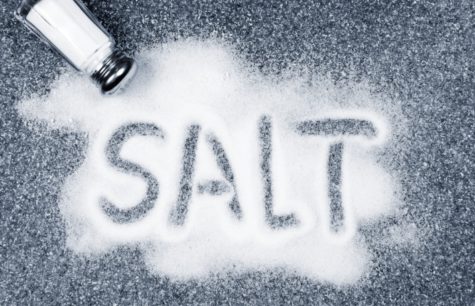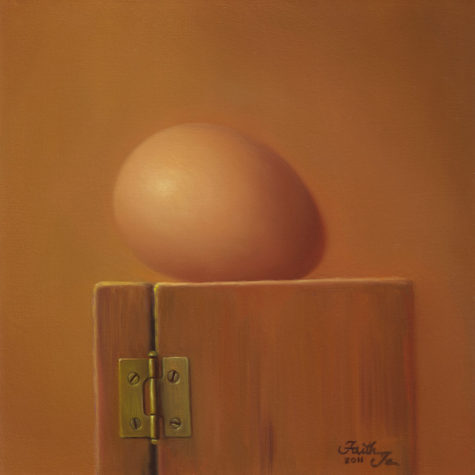Earth
Salt
The sea is full of salt, and so there is an inextricable link between the mineral, salt, and the element of water. However, salt is frequently produced by allowing sea water to evaporate on the ground, and so salt is also associated with the Earth; witness the popular saying “salt of the earth,” meaning that a person is good, grounded, and honest.
The cuboid structure of salt is further reason for it to be a symbol of the earth element, as well as making it an emblem of protection. Salt has a practical use as a preservative of meat, fish, and other foodstuffs; it has therefore taken on the same symbolic significance – as seen in rites and rituals – to sanctify and protect holy or magical places.
It is used for this reason from cathedral services to the Magick Circle. It is possible that this practice is a residue from the time when blood from sacrificial animals was used for this purpose, the blood being sprinkled with salt to soak it up.
Alchemists hold that salt – which represents the human body – is one of the three vital natural ingredients, called the three alchemical principles, and that it forms a trinity with sulphur and mercury.
The use of salt as a means of preserving foodstuffs was invaluable to our ancestors, especially to those making long voyages by sea when fresh meat would be virtually impossible to procure. Salt is also able to bring out flavors in any food to which it is added, and was considered to be so valuable a commodity that it was used as currency to pay people for their work; hence the word ‘salary’ from the Latin, salarium.
Because salt is valuable in so many ways, spilling it is considered to be a bad omen. This is still counteracted by making a cross in the salt, then throwing some salt over the left shoulder, and into the “eye of the Devil.”
Omens and Superstition:
It is unlucky to borrow salt, and still more so to return it; if the lender wants it back, she must “borrow” it from the original borrower.
To spill salt is a very ill omen. In Yorkshire, it is said that a tear must be shed for every grain spilt. It must not be scraped up, but a little should be thrown three times over the left shoulder to avert the misfortune. If it scatters in the direction of another person, bad luck will come to him, or to a member of his family.
A salt cellar overset between two friends is a sign that they will quarrel.
In some areas, it was thought that the first things carried into a new house, before any of the furniture was brought in, must be a box of coal and a plate of salt. In England, at Eastnor, people leaving a house were warned that they mush leave bread and salt behind them, otherwise bad luck would follow both for them and for the new tenants.
In his Description of the Isle of Man, Waldron says that Manxmen in his time would not “go out on any material affair without taking some salt in their pockets, much less remove from one house to another, marry, put out a child, or take one to nurse without salt being mutually exchanged.”
Cattle were stained with salt in the Outer Hebrides before being moved from one pasture to another. Dairymaids dropped a pinch into their pails when they began milking, and butter makers into their churns, to avert the spells of witches.
At sea, the word “salt” must not be spoken, and the stuff itself must never under any circumstances be thrown overboard. The men of the Tweed sprinkle their nets with salt, and throw it into the water, to placate the river spirit and ensure the safety of the boats.
From: The Encyclopedia of Superstitions
Saffron
Symbolic Meanings of the Color Saffron:
- Spirituality
- Holiness
- Good Fortune
This color is named for the saffron crocuses whose stigmata create the color. The harvesting of these delicate plant parts is a labor-intensive and time-critical matter and so the actual dye is costly to produce. Saffron is an extremely auspicious color for Buddhists, Hindus, Jains, and Sikhs. A saffron or orange banner indicates a place of spiritual worship.
The foreheads of Hindu deities are daubed with saffron paste to denote their celestial status, and although the Hindu pantheon is vast and complex, the use of saffron is a unifying factor across the many different manifestations of the faith.
Saffron is paler and more golden than true orange, and is said to be the color of wisdom, the rising Sun, and of Mother Earth.
Source: The Element Encyclopedia of Secret Signs and Symbols
Brown
 Symbolic Meanings of the color Brown:
Symbolic Meanings of the color Brown:
- Poverty
- Humility
- Practicality
Brown is the color primarily associated with the Earth, soil, the raw element before it is covered with greenery. The word for earth, in Latin, is humus, which carries the same root as humility. Religious ascetics wear brown as a reminder of this quality and also of their voluntary material poverty.
The brown color says stability, reliability, dependability, and approachability. It is the color of our soil, growth, fertility, and earth, and it is associated the concepts of “all natural” and “organic.” Brown is the color of the Earth and is comforting and nurturing.
Other meanings associated with the color brown:
- The term “brown bottle” refers to a bottle of beer.
- To “brown” something is to cook or burn it.
- The saying “brown-nose” refers to someone who sucks up, or kisses butt to someone of authority.
- The phrase “brown study” is used to describe someone who is aloof, indifferent.
- The expression “brown out” refers to a partial loss of service.
Collected from various sources.






